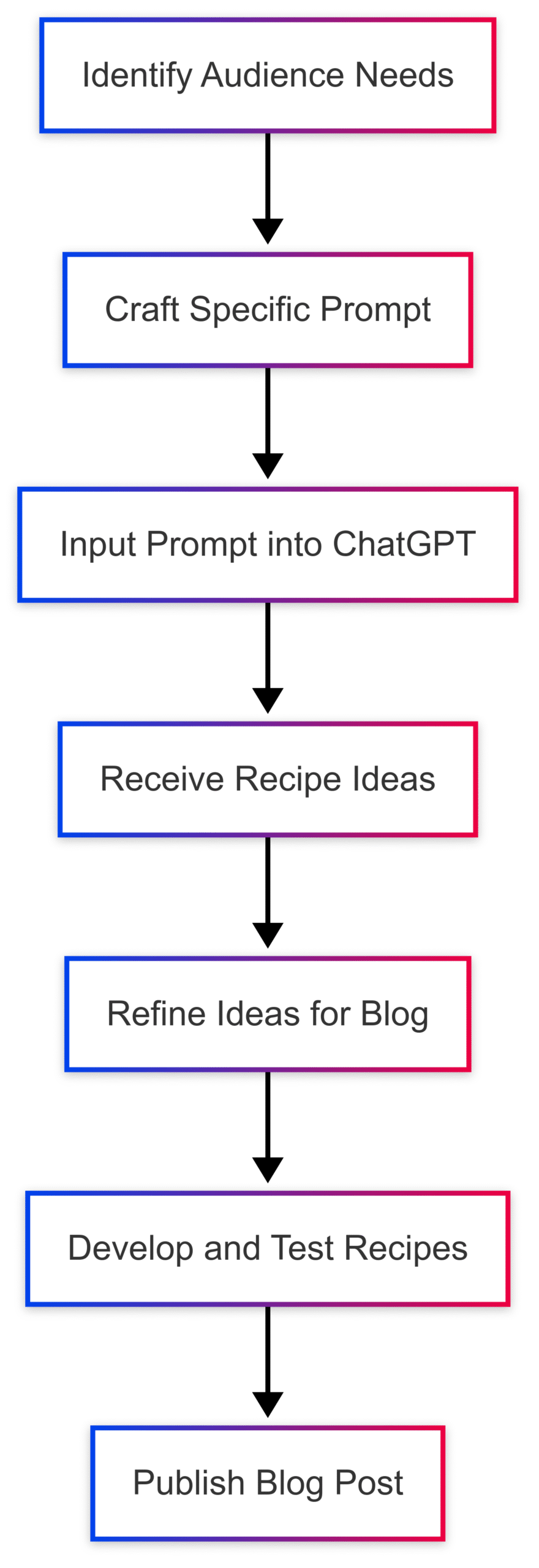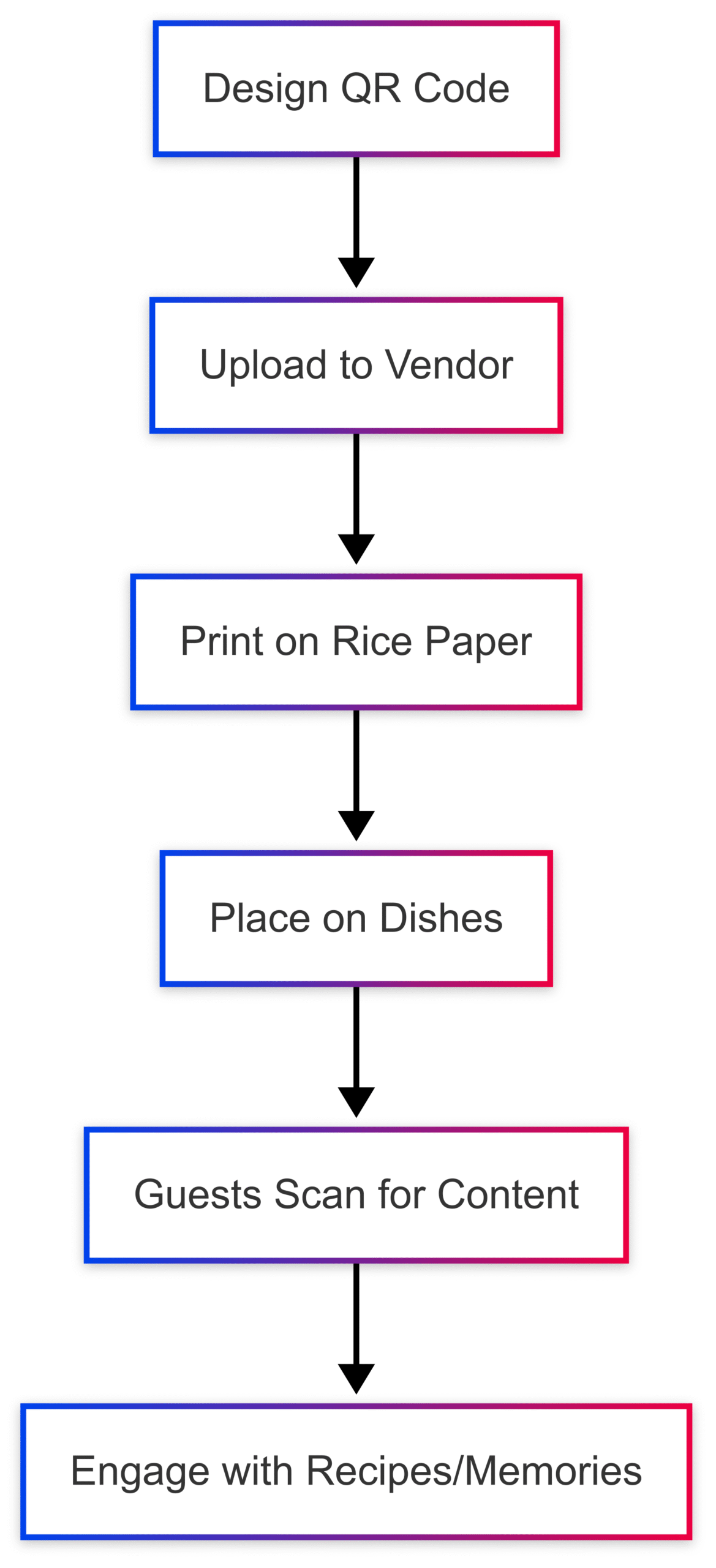Discover 7 strategic ways food creators can leverage ChatGPT to boost creativity, streamline content, and enhance SEO for food blogs.
Artificial intelligence is transforming the way content creators operate, and for food bloggers, ChatGPT, developed by OpenAI, is a game-changer. This natural language processing tool can streamline workflows, spark creativity, and enhance audience engagement. While concerns about AI using content without credit persist, when used responsibly, ChatGPT can be a powerful ally in crafting high-quality, reader-focused content. Google’s guidelines emphasize that AI-generated content is acceptable as long as it prioritizes originality and adheres to E-E-A-T principles (Experience, Expertise, Authoritativeness, and Trust). This article explores seven strategic ways food creators can harness ChatGPT to elevate their blogs, social media, and creative processes, ensuring they stay competitive in the digital landscape.
1. Brainstorming Innovative Recipe Ideas
One of the most exciting applications of ChatGPT for food creators is its ability to generate fresh recipe ideas. Whether you’re stuck in a creative rut or looking to capitalize on trending ingredients, ChatGPT can provide inspiration tailored to your niche.
How It Works
By crafting specific prompts, you can generate recipe ideas that align with seasonal trends, dietary preferences, or unique ingredient combinations. For example, a prompt like, “Suggest five vegan autumn recipes featuring butternut squash and hazelnuts,” can yield inventive ideas such as Butternut Squash and Hazelnut Stuffed Portobello Mushrooms. This level of specificity ensures the suggestions are unique and relevant to your audience.
Practical Example
Consider the following prompt:
“As a food blogger, suggest five gluten-free dessert recipes featuring seasonal berries for a summer blog post aimed at health-conscious readers.”
ChatGPT might respond with ideas like:
- Gluten-Free Strawberry Shortcake with Almond Flour Biscuits
- Blueberry Chia Pudding Parfait
- Raspberry Lemon Tart with Coconut Crust
- Blackberry Coconut Macaroons
- Mixed Berry Sorbet with Fresh Mint
These suggestions can serve as a starting point, which you can refine to match your brand’s voice and style.
Why It Matters
ChatGPT’s ability to pull from a vast database of culinary knowledge allows creators to explore new flavor profiles and adapt recipes for specific diets (e.g., vegan, keto, or gluten-free). This can help food bloggers stay ahead of trends and attract diverse audiences.
Chart: Recipe Brainstorming Workflow

2. Overcoming Writer’s Block
Writer’s block is a common challenge for food bloggers, especially when crafting engaging introductions, meta descriptions, or FAQ sections. ChatGPT can help jumpstart the writing process by generating drafts or ideas that you can personalize.
How It Works
By providing a detailed prompt, you can ask ChatGPT to create content snippets, such as:
- Blog post titles: “Generate 10 SEO-friendly blog post titles for a vegan lasagna recipe.”
- Meta descriptions: “Write a 150-character meta description for a butternut squash soup recipe to encourage click-throughs.”
- FAQ sections: “Draft five FAQ questions and answers for a sourdough bread recipe.”
For example, a prompt like, “As a food blogger, write a 100-word introduction for a chocolate chip cookie recipe in a warm, inviting tone,” might yield a draft you can tweak to match your voice.
Practical Example
Prompt: “Write an SEO-friendly meta description under 150 characters for a butternut squash soup recipe, targeting home cooks looking for easy recipes.”
Response: “Warm up with this easy butternut squash soup recipe! Creamy, flavorful, and perfect for fall. Ready in 30 minutes. Click for the full recipe!”
Why It Matters
ChatGPT saves time by providing a starting point, allowing creators to focus on refining content rather than starting from scratch. This is particularly useful for repetitive tasks like writing recipe card descriptions or email newsletters.
3. Enhancing SEO Strategies
Search engine optimization (SEO) is critical for food bloggers to drive traffic to their websites. While ChatGPT isn’t a full-fledged keyword research tool, it can assist in brainstorming long-tail keywords and content ideas to improve search visibility.
How It Works
Use prompts like, “List the top 10 long-tail keywords for ‘butternut squash soup’ without descriptions,” to generate keyword ideas. For example:
- Easy butternut squash soup recipe
- Creamy butternut squash soup
- Vegan butternut squash soup
- Butternut squash soup with coconut milk
- Healthy butternut squash soup recipe
You can refine these by asking, “Provide five more long-tail keywords similar to ‘easy butternut squash soup recipe.’”
Limitations
ChatGPT lacks real-time search volume or keyword difficulty data, so you’ll need to pair it with tools like Google Keyword Planner, SEMrush, or Ahrefs for comprehensive SEO research.
Why It Matters
Incorporating long-tail keywords into blog posts, titles, and meta descriptions can improve search rankings and attract targeted traffic. ChatGPT’s keyword suggestions can spark ideas for niche topics that resonate with your audience.
Table: SEO Tools Comparison
| Tool | Search Volume Data | Keyword Difficulty | Cost | ChatGPT Integration |
|---|---|---|---|---|
| Google Keyword Planner | Yes | No | Free | Supplement |
| SEMrush | Yes | Yes | Paid | Supplement |
| Ahrefs | Yes | Yes | Paid | Supplement |
| ChatGPT | No | No | Free/Paid | Primary (Brainstorming) |
4. Crafting Engaging Social Media Captions
Social media is a vital channel for food creators to promote recipes and engage with followers. ChatGPT can generate captions that align with your brand’s tone and encourage user interaction.
How It Works
A prompt like, “As a food blogger, write three Instagram captions in a sarcastic tone for a butternut squash soup recipe, aiming to drive clicks to the recipe. Include emojis,” might yield:
- “Another boring soup recipe? Nah, this butternut squash soup slaps. Get the recipe before it’s gone 🍜😏.”
- “Made butternut squash soup so good, it deserves its own fan club. Join the hype, link in bio 🥄🔥.”
- “Yes, it’s soup season. No, it’s not basic. Try this butternut squash soup and thank me later 🍂🙌.”
Why It Matters
Crafting captions that resonate with your audience can boost engagement and drive traffic to your blog. ChatGPT’s ability to tailor tone and add emojis saves time and ensures consistency across platforms.
5. Streamlining Email Marketing
Email marketing is a powerful tool for food bloggers to connect with subscribers. ChatGPT can help draft compelling email copy and subject lines that increase open rates and click-throughs.
How It Works
Prompt:
“Draft a 100-word email in a humorous tone to promote a butternut squash soup recipe. Include five emojis and a catchy subject line.”
Response:
Subject: This Soup Will Change Your Life 🍲
Hey foodie friends! Tired of the same old dinner routine? This butternut squash soup is here to save your tastebuds 😋. Creamy, cozy, and stupidly easy to make, it’s like a warm hug in a bowl 🥄. Ready in 30 minutes, it’s perfect for chilly nights 🌙. Grab the recipe now and thank me later! 🍂 Click the link to spice up your fall menu. Happy cooking! 😎
Why It Matters
ChatGPT provides a draft you can personalize, saving time on repetitive tasks like newsletter creation. This allows you to focus on building stronger connections with your audience.
6. Improving Writing Quality
Polished writing is essential for food blogs to convey professionalism and clarity. ChatGPT can act as a free proofreading tool, checking for grammar, punctuation, and clarity.
How It Works
Paste your draft into ChatGPT with a prompt like, “Proofread this blog post introduction for grammar, clarity, and typos. Suggest improvements.” ChatGPT will highlight errors and propose alternative phrasing to enhance readability.
Practical Example
Prompt:
“Explain how to knead bread in under 50 words, written for beginners.”
Response: “To knead bread, press the dough with your palms, fold it over, and repeat. Push firmly, using your body weight. Knead for 8-10 minutes until smooth and elastic.”
Why It Matters
Clear, error-free writing enhances user experience and builds trust with readers. ChatGPT’s suggestions can help simplify complex instructions, making recipes accessible to all skill levels.
7. Educational Support for Techniques and FAQs
Explaining culinary techniques or answering reader questions can be challenging. ChatGPT can simplify complex processes and generate FAQ content to improve user engagement.
How It Works
Prompt:
“Explain how to dice an onion in under 50 words for a beginner audience.”
Response: “To dice an onion, peel and halve it. Place flat side down, make vertical cuts, then horizontal cuts. Slice across to create small cubes. Use a sharp knife for safety.”
You can also ask, “Generate five FAQ questions and answers for a chocolate chip cookie recipe,” to address common reader queries like baking times or ingredient substitutions.
Why It Matters
Clear explanations and comprehensive FAQs improve user experience, reduce bounce rates, and position your blog as a reliable resource.
Creative Case Study: Edible QR Codes
One of the most innovative uses of ChatGPT is generating unique culinary concepts, such as edible QR codes for Thanksgiving. These codes, printed on rice paper with food-safe ink, can link to recipes, family memories, or interactive games, adding a tech-savvy twist to your table.
Example Applications
- Interactive Recipe Sharing: QR codes on dishes link to recipes.
- Family Memories: Codes on desserts connect to videos or photos.
- Gratitude Notes: Codes on place cards reveal heartfelt messages.
Chart: Edible QR Code Workflow

Cost and Specifications
| Item | Specification | Estimated Cost |
|---|---|---|
| Food-Safe Ink Printer | Edible ink for rice paper | $200-$500 |
| Rice Paper Sheets | 100 sheets, A4 size | $10-$20 |
| QR Code Design Software | Canva Pro or similar (optional) | $12/month |
Best Practices for Using ChatGPT
Prompt Engineering Tips
- Be Specific: Include audience, tone, and word count.
- Iterate: Refine prompts based on initial outputs.
- Personalize: Edit ChatGPT’s responses to match your voice.
- Supplement with Tools: Use SEO or analytics tools for data-driven insights.
Ethical Considerations
- Credit Originality: Avoid publishing raw ChatGPT outputs; always add your expertise.
- Transparency: Disclose AI use if it aligns with your brand’s values.
- E-E-A-T Compliance: Ensure content demonstrates experience and trust.
Conclusion
ChatGPT is a versatile tool for food creators, offering solutions for brainstorming, writing, SEO, social media, email marketing, proofreading, and education. By mastering prompt engineering and integrating ChatGPT with other tools, food bloggers can save time, boost creativity, and produce high-quality content that resonates with readers. As AI continues to evolve, embracing tools like ChatGPT will keep food creators competitive while delivering value to their audiences. Experiment with these strategies, refine your prompts, and watch your content soar.
Please share these 7 Strategic Ways Food Creators Can Use ChatGPT with your friends and do a comment below about your feedback.
We will meet you on next article.
Until you can read, 6 Keyword Research Tips for Food Bloggers
